Issue 27/2 by Afrika Focus
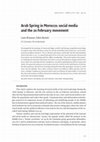
Encouraged by the uprisings in Tunisia and Egypt, and the Arab Spring, young Moroccans began to o... more Encouraged by the uprisings in Tunisia and Egypt, and the Arab Spring, young Moroccans began to organise huge demonstrations across the country demanding more democracy, social justice and anti-corruption measures. The 20 February movement, named after the first demonstration held on that date in 2011, is a good illustration of one of the new social movements characterized by an intense use of technology and their diffuse membership. This article explores how protesters challenge the dominant institutions and norms in society through their struggle and how they try to create new meanings for these institutions, not only by protesting but also by using social media. We argue that using new social media is not only a vehicle for the mobilisation of activists, but also represents a form of new meaning-making for them: they participate, not only in a local sense, but also globally. Their online activities intersect and influence offline practices and vice versa, creating a continuous interaction which exerts an influence on both worlds. It is precisely this interconnectedness of offline and online worlds that is the decisive force in these movements and creates new meaning-making.
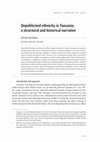
Much of the literature on ethnicity in Africa regards ethnicity as a central cleavage and associa... more Much of the literature on ethnicity in Africa regards ethnicity as a central cleavage and associates its politicisation with civil war and deteriorating socio-economic conditions. Tanzanian society is not structured by this cleavage, making it an outlier among African states. Despite the negative impact of politicised ethnicity, little is known of the circumstances through which it germinates and comes to have negative consequences, or how it can be suppressed in Africa. The present article attempts a comprehensive analysis of the structural and historical factors that have made the move away from politicisation of ethnicity in Tanzania possible. It provides an eclectic structural and historical explanation that attributes lack of ethnic salience in Tanzanian politics to a particular ethnic structure, to certain colonial administrative and economic approaches, and to a sustained nation-building ethos. The argument results from a critical analysis of secondary material on ethnicity and the politics of Tanzania. afrika focus -Volume 27, Nr. 2 [ 50 ] m. malipula afrika focus -2014-12 [ 51 ] Depoliticised ethnicity in Tanzania: a structural and historical narrative afrika focus -Volume 27, Nr. 2 [ 52 ] m. malipula afrika focus -Volume 27, Nr. 2 [ 54 ] m. malipula 8 The population census of 2009 indicates that the total population of Kenya is 38.6 million with the large tribes constituting 24.6 million. The distribution being Kikuyu: 6.6m Luhya: 5.3m, Kalenjin: 4.9m, Luo: 4m and the Kamba: 3.8m. 9 Assuming all are eligible to vote the minimum winning coalition requires 19.3 million which could be met if the Kikuyu,Luhya and Kalenjin plus Kikuyu's cousins Embu and Meru joined. afrika focus -Volume 27, Nr. 2 [ 56 ] m. malipula
Issue 27/S (special agroforestry issue) by Afrika Focus

Garcinia lucida Vesque (Clusiaceae) is a tree species that is highly valued for its medicinal pro... more Garcinia lucida Vesque (Clusiaceae) is a tree species that is highly valued for its medicinal properties by rural households in the humid forest zone of Cameroon. However, the unsustainable exploitation of the species threatens its long-term regeneration. This study focuses on its vegetative propagation via stem cuttings in non-mist propagators and through grafting. The study tests the effects of three rooting media (sand, sawdust, sand + sawdust (1/1); three leaf sizes (0,25 and 50 cm 2 ); and three types of hormone [indole butyric acid (IBA), indole-3-acetic acid (IAA) and naphthalene acetic acid (NAA)], applied as a single dose. Furthermore, three grafting techniques (cleft, side tongue and whip-and-tongue grafting) were tested. All experiments were designed as completely randomized blocks with three replicates. Results showed that cuttings require a medium that has low water holding capacity and high porosity, and a leaf area of 50 cm 2 and NAA treatment; grafting success was affected by the technique used, with top cleft grafting yielding a 100% success rate. From this preliminary study, it is concluded that G. lucida is amenable to vegetative propagation by cuttings and grafting.

In Cameroon, agriculture constitutes the main livelihood for a large portion of the population. A... more In Cameroon, agriculture constitutes the main livelihood for a large portion of the population. Against this background, land tenure security is of crucial importance for agricultural production and off-farm activities. This article aims to foster understanding of small-holder farmers' access to land in the Njombé-Penja district of Cameroon. Data was collected using focus group discussions with small-holders, key informant interviews, field observations and formal surveys. Results indicate that the current land tenure situation often limits small-holder farmers' access to productive land. This often results in conflicts between various actors including plantation agriculture, rural elites and research institutions, and hence threatens small-holders' security for food and livelihoods. We conclude that there is a need to revisit existing policies for land allocation to multinational companies in order to protect small-holder producers' rights and security, and to harmonize the various tenure systems as a means to avoid competing claims among various actors.
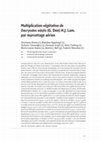
afrika focus -Volume 27, Special Agroforestry Issue [ 42 ] c. elomo, b. nguénayé, z. tchoundjeu, ... more afrika focus -Volume 27, Special Agroforestry Issue [ 42 ] c. elomo, b. nguénayé, z. tchoundjeu, et al. Dacryodes edulis (G. Don) H. J. Lam. (Burseraceae) is a high-value fruit tree in West and Central Africa. Air layering of this species is now under control, but uncertainty remains as to the effect of a number of factors on rooting; these include cloning the type of propagule, the orientation of branches and the position of the marcots in the crown. A series of experiments were conducted to evaluate the effect of cloning, the type of propagule (cuttings and marcots), position in the crown (lower and upper) and the orientation of branches (plagiotropic, oblic and orthotropic) on the tree´s rooting ability. For the first three factors, older clones of 10 years with a normal maturation were bedded in equal proportions of decomposed sawdust and arable soil. To test the orientation factor late maturing trees of over 20 years bedded in, decomposed sawdust were used. Ten months after the setting up of marcots, the results showed that the clonal effect significantly (p<0.001) affects the rooting of marcots. The best result was obtained for clones MA/DE/40M, BUM/DE/36M and DE/M/2-70C. The type of propagule had a significant effect (p<0.012) on percentage of rooting marcots. On the dead marcots, this effect was significant (p<0.038) from the eighth month. No significant effect (p = 0.124) of the position of the branch in the crown was recorded on the rooting of marcots. However, the upper crown had apparently a high percentage of rooting (39.59 ± 3.37%) compared to that of the lower crown (31.94 ± 3.44%) at 10 months. The percentage of dead marcots recorded was high at lower crown marcots (40.28 ± 4.08%) and the mean number of primary roots was low (6.97 ± 0.87 %) compared to the upper part (33.33 ± 3.91 and 7.36 ± 0.8% respectively). Nine months after the setting up of marcots, the orthotropic branches showed a high number of primary roots (13.55 ± 1.22%) and a low percentage of dead marcots (6.67 ± 4.55%) compared to plagiotropic branches (7.84 ± 0.77 and 26.67 ± 8.05% respectively). With respect to the orientation of branches, no significant (p = 0.45) effect on the rooting of marcots was recorded, but the rooting percentage of marcots on plagiotropic and oblic branches (43.33 ± 9.05%) was high compared to the percentage of orthotropic branch (30 ± 8.34%). It can therefore be concluded from this study that orthotropic branches of D. edulis, upper crown are among the best parameters for air layering.

Gnetum africanum Welw. (Gnetaceae) is a forest vine that is highly valued for its leaves which ar... more Gnetum africanum Welw. (Gnetaceae) is a forest vine that is highly valued for its leaves which are a source of food and income. Because wild populations are threatened by over-harvesting, there is an increasing need to cultivate the plant, which in turn entails a need for developing good quality planting material. This study investigates the effects of four provenances, four substrates and their interactions on rooting and shoot development of vine cuttings of G. africanum using the non-mist propagation system developed by ICRAF. Single-node, half-leafed vine cuttings were used and data on rooting and leaf production were collected monthly from the second to the fifth months. Rooting percentages were subjected to analysis of variance using logistic regression procedures in Genstat version 12. Provenance (P<0.001), substrate (P<0.001) and interaction between provenance and substrate (P<0.001) showed highly significant effects on rooting. Excel was used to determine rooting percentages, with the highest observed in fine sand on cuttings from Lekie-Assi (81%) and Boumnyebel (79%) which are high G. africanum exploitation areas in the Centre Region of Cameroon. Boumnyebel showed a significantly higher shoot development than the other provenances. Fine sand and sharp sand can be recommended for rapid, low-cost production of G. africanum planting material.
Issue 27/1 by Afrika Focus
Gum arabic is a resin collected from several types of Acacia tree growing most densely in arid an... more Gum arabic is a resin collected from several types of Acacia tree growing most densely in arid and semi-arid lands in East Africa and the Sahel. Kenya is particularly well endowed with gum-yielding trees but exports only small amounts of gum.
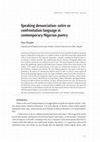
Contemporary Nigerian poets have had to contend with the social and political problems besetting ... more Contemporary Nigerian poets have had to contend with the social and political problems besetting Nigeria's landscape by using satire as a suitable medium, to distil the presentation and portrayal of these social malaises in their linguistic disposition. Arguably, contemporary Nigerian poets, in an attempt to criticize social ills, have unobtrusively evinced a mastery of language patterns that have made their poetry not only inviting but easy to read. This epochal approach in the crafting of poetry has significantly evoked an inimitable sense of humour which endears these poems to the readers. In this regard, the selected poems in this paper are crowded with anecdotes, the effusive use of humour, suspense and curiosity. The over-arching argument of the paper is that satire is grounded in the poetics of contemporary Nigerian poetry in order to criticize certain aspects of the social ills plaguing Nigerian society. The paper will further examine how satire articulates social issues in the works of contemporary Nigerian poets, including Niyi Osundare, Tanure Ojaide, Chinweizu, Femi Fatoba, Odia Ofeimun, Ezenwa Ohaeto, Obiora Udechukwu and Ogaga Ifowodo. Viewed in the light of artistic commitment, the paper will demonstrate how satire accentuates the role of these poets as the synthesizers/conduits of social and cultural concerns of Nigerian society for which they claim to speak. As representatively exemplified in the selected poems, the paper will essentially focus on the mediation of satire for the impassioned criticism of social and moral vices, militating against Nigeria's socio-political development.

Throughout the history of the Democratic Republic of the Congo, various writings -literary, socio... more Throughout the history of the Democratic Republic of the Congo, various writings -literary, sociological, and political -retrace the challenges that have faced the nation: colonialism, access to independence, postcolonial failures, wars, dictatorships and female exploitation. Some historians, sociologists, literary critics and journalists touted the successes of colonial times and the first Republic, especially those who worked for these governments. Other essential voices remained silent, in order to avoid dictatorial repression and censure, especially under President Mobutu. With the arrival of Laurent Kabila, freedom of speech brought forth discourse that slowly deteriorated into insincere rhetoric and, finally, utter silence. In Les Terrassiers de Bukavu: Nouvelles, Charles Djungu-Simba, the editor of several Bukavu Congolese novella writers, predicts that the sociopolitical discourse put forth in such narratives will lead to chaos followed by further repression that will continue the cycle presented all along these metanarratives unless oppression is radically addressed from the grassroots.
As it is the case for most of the African countries, Togo is looking for a constitutional system ... more As it is the case for most of the African countries, Togo is looking for a constitutional system that fits its political, social and cultural realities. The 1990s were considered as a period of democratic revival, and from those years onwards the constitutional organization was directed towards a parliamentary type of regime which was rightfully or wrongfully seen as an instrument whereby the head of state's powers were limited. However, the unfortunate result of this kinds of organization of the political powers leads to another constitutional system which is more likely to be presidential.
Issue 26/2 by Afrika Focus
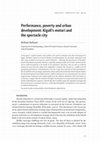
In this paper I explore tensions and conflicts over poverty reduction and urban development in Ki... more In this paper I explore tensions and conflicts over poverty reduction and urban development in Kigali, Rwanda's capital in terms of theories of performativity. On one hand, motorcycle taxis offer large numbers of young men good livelihoods -reflecting the government of Rwanda's stated commitment to poverty reduction, especially amongst youth; on the other, motorcycle taxi drivers suffer harassment at the hands of city authorities and police, who are keen to eradicate motorcycle taxis from the urban scene altogether. I interpret this tension as a conflict over the appropriate performance of development in the city; I argue that in pursuit of urban development, the city itself becomes an image, projected in order to attract the investment which will give body to the simulated spectacle that Kigali present. Conflicts between the city and motorcycle taxi drivers erupt because motorcycle taxis cannot perform to the aesthetic standards of the new Kigali. In conclusion, I suggest that the rendition of Kigali's development as image has broader lessons for studies of development in general. Specifically, these conflicts expose the operation of images and their performance as political resources, conferring intelligibility and legitimacy in the spectacle of national development. afrika focus -Volume 26, Nr. 2 [ 10 ] w. rollason afrika focus -2013-12 [ 11 ] Performance, poverty and urban development afrika focus -Volume 26, Nr. 2 [ 12 ] w. rollason afrika focus -Volume 26, Nr. 2 [ 14 ]

1) Haramaya University, Ethiopia (2) Addis Ababa University, Ethiopia In a first step to understa... more 1) Haramaya University, Ethiopia (2) Addis Ababa University, Ethiopia In a first step to understand the interactions between Coffea arabica L. trees and mycorrhizae in Ethiopia, an investigation of the current mycorrhizal colonization status of roots was undertaken. We sampled 14 shade tree species occurring in coffee populations in Bonga forest, Ethiopia. Milletia ferruginea, Schefflera abyssinica, Croton macrostachyus, Ficus vasta, F. sur, Albizia gummifera, Olea capensis, Cordia africana, Ehretia abyssinica, Pouteria adolfi-friederici, Pavetta oliveriana, Prunus africana, Phoenix reclinata and Polyscias fulva. Coffee trees sampled under each shade tree were all shown to be colonized by arbuscular mycorrhizal fungi (AM fungi). Four genera and 9 different species of AM fungi were found in the soils. Glomus (Sp1, Sp2, & Sp3 & Sp4), Scutellospora (Sp1 & Sp2) and Gigaspora (Sp1 & Sp2)
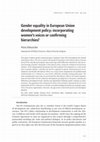
This paper examines gender mainstreaming in European Union (EU) development aid towards Sub-Sahar... more This paper examines gender mainstreaming in European Union (EU) development aid towards Sub-Saharan Africa. The aim is to detect how gender (in)equality in Sub-Saharan Africa is framed by the EU by critically assessing the nature and range of the differences between EU and civil society framings of gender (in)equality in Sub-Saharan Africa. Using the method of Critical Frame Analysis, 28 EU programming documents have been analysed and compared to 10 civil society texts on gender equality. I conclude that the EU's approach to gender mainstreaming in its development aid towards Sub-Saharan Africa is to a large extent integrationist and predominantly instrumentalist as it is framed as a way of more effectively achieving existing policy goals. The more transformative issues that are put forward by Sub-Saharan African civil society organisations do not fit within the EU's dominant development paradigm that is focused on achieving the Millennium Development Goals and does not significantly challenge gender relations or power structures. The gap between the analysed civil society views and those expressed by the EU can be explained by the EU's reluctance to include in its policy drafting the promotion of gender equality by civil society organisations. Moreover, the gap seems to have both practical and ideological grounds.
This paper investigates Lubà-kasààyi folklore, particularly a folk song, in order to reveal an et... more This paper investigates Lubà-kasààyi folklore, particularly a folk song, in order to reveal an ethno-gendered construction of wifehood. It aims to show girls' socialization into a sexist and patriarchal discourse and how such a practice ideologically initiates them into their future subservient role of caterers for the husbands' alimentation needs. Moreover, folklore seems to perpetuate traditions, and so the gender inequality inscribed within them, a situation that is particularly apparent in villages.
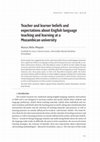
Recent studies have suggested that teacher and learner beliefs about second language instruction ... more Recent studies have suggested that teacher and learner beliefs about second language instruction have a significant influence on language teaching and learning process and, consequently, on students' achievements. However, in the Mozambican context, we still do not have studies focusing on learner and teacher beliefs about students and language proficiency, about teaching materials, about individual and cultural variations and beliefs about the learning process itself. Using questionnaires and a focus group report, we look at the Mozambican linguistic profile, the learner and teacher beliefs and their influence in tertiary English Language Teaching (ELT) and learning. The results show that there is a need for creating an environment in which teachers' and learners' cultural background, beliefs and needs are considered so as to enable teachers to teach effectively, as well as enabling learners to achieve positive learning outcomes.
Issue 26/1 by Afrika Focus
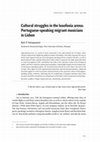
Approaching music as a point of social connection in the post-colonial city of Lisbon, where cult... more Approaching music as a point of social connection in the post-colonial city of Lisbon, where cultural entrepreneurs deploy the political concept of lusofonia, this study examines the ways in which local migrant musicians from Portuguese-speaking African countries (PALOP), as well as Brazil and East Timor, position themselves in this context. In general, the study shows that there is a lack of recognition of the contribution they make to the expressive culture of the Portuguese capital, and this is related to national preconceptions. Surprisingly, despite several existing counter-discourses regarding lusofonia, all interviewed musicians do see some future relevance in this concept. They appeal to both supranational institutions and national governments, asking for structural support in order to promote and disseminate all the expressive culture of Portuguesespeaking African countries, indicating that the contribution of migrant musicians from these countries should be considered as an integral part of Portugal's cultural expression and heritage.
This article critiques the idea that Africa under existing conditions of globalisation can take c... more This article critiques the idea that Africa under existing conditions of globalisation can take control of its own destiny in the 21st century. It does so by interrogating the empirical economic evidence for recent growth figures on the continent. It argues the optimism that Africa is on the verge of an economic breakthrough is misplaced and needs to be set in the historical context of recurrent optimism that quickly fades under the realities of exploitation and underdevelopment in the continent. Opportunities for sustainable growth and development lie not with greater integration with the world economy but with, among other things, local political and economic struggles in Africa for greater participation in local decision making and control of international capital.
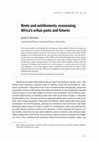
This article considers recent literature on contemporary urbanization in Africa that is united in... more This article considers recent literature on contemporary urbanization in Africa that is united in its 'post-normative' orientation, firmly discarding the 'expectations' of modernization that so deeply shaped twentieth-century research on African cities. Best typified by the work of urban anthropologists such as Abdoumaliq Simone, this scholarship instead focuses on the 'vernacularization' of urban structures and strategies in Africa. While such work has developed a host of new insights into the idiosyncratic nature of African urbanization, it has largely eschewed comparative analysis of enduring economic strategies that lie at the heart of the massive growth of African cities. By focusing on the longer-term historical role of such processes -namely urban rents and urban price regulations -this article suggests a more comparative framework for the study of urban Africa that still accounts for the otherwise seemingly hyper-local and idiosyncratic forms of urban livelihoods and strategies.



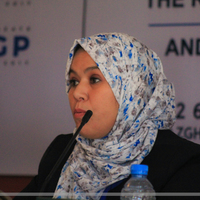






Uploads
Issue 27/2 by Afrika Focus
Issue 27/S (special agroforestry issue) by Afrika Focus
Issue 27/1 by Afrika Focus
Issue 26/2 by Afrika Focus
Issue 26/1 by Afrika Focus